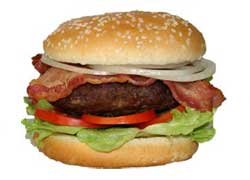Burgernomics is a fun comparison that looks at whether a country’s currency is under or overvalued.
The ‘Bag Mac Index’, or Burgernomics, was started by The Economist magazine in 1986 and the latest version is out.
Essentially, it takes the price of the burger and divides it by the prevailing US Dollar exchange rate at the time to reveal a theory of purchasing-power parity (PPP) between countries.
It makes for fascinating reading since the three countries it flags up as being under-valued for its currency are India, South Africa and Hong Kong.
The most overvalued countries are Venezuela, Norway and Sweden.
UK and USA hit the mark
The UK, along with the United States, Chile, New Zealand and Costa Rica are rated as being in the -/+ 10% for their currencies, which puts them at the centre of the survey.
Though India’s version, the Maharaja Mac is made of chicken, it is still overpriced at 62%.
The index also highlights the actual exchange rate as being 53.40 Rupees to a Dollar – but the ‘implied exchange rate’ is that the Rupee is being valued 20.38 Rupees.
That places the Rupee at the same point as last year but it’s still higher than the survey two years ago which put the currency at around 53% for overvaluation.
South Africa fares little better with its actual exchange rate of 9.05 Rand having an implied rate of 4.20 Rand – a 53.6% undervaluation.
The Big Mac Index is tough on the oil producing countries too.
Oil nations are overvalued
Venezuela has an actual exchange of 4.29 Bolivars but the Index puts the currency at being overvalued by 108% and the implied exchange rate is 8.93 Bolivars.
Norway fares no better with its actual rate of 5.48 Kroner having an implied rate of 9.85 Kroner – an over-valuation of 80%.
However, Saudi Arabia’s currency isn’t too badly off with an actual rate of 3.75 Riyals having an implied rate of 2.52 Riyals which is an under-valuation of 33%.
A spokesman for the magazine said: “Burgernomics is not intended to be a precise gauge of currency’s misalignment, but a tool to help make the exchange-rate theory easier to digest.
“Though since its introduction, the Big Mac Index has become of a standard around the world and is included in several textbooks and the subject of around 20 academic studies.”
The theory of PPP is that in the long term an exchange rate will move towards a rate which equalises the prices of an identical basket of goods and services between two countries. In this case it is a burger which is sold around the world and thought to be an easy – and accessible – method of making that assessment.

According to me, there are lots of black spots in PPP theory on the basis of statement “The theory of PPP is that in the long term an exchange rate will move towards a rate which equalizes the prices of an identical basket of goods and services between two countries.” Burger is not right item to pick for PPP theory.